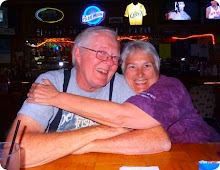Aiken, SC
We had one last stop we wanted to make before leaving Aiken. We almost didn’t go because it was rather chilly (at least for me) but I’m so thankful we did. This has to be one of the most beautiful rescue sites in the country.
Their mission is to rescue unwanted horses who have suffered from abuse and neglect; work with various racetracks to ‘repurpose’ Off-the-Track-Thoroughbreds; and take horses whose owners can no longer care for them; giving them all a place to stay until they can be adopted by loving families.
The Rescue was established in 2006 with almost 90 acres of land which was donated to them by a truly wonderful person whoever they are.
There are eight pastures, thirteen paddocks, a stable, an office building, and maintenance barn. In the ten years since its founding, Aiken Equine Rescue has become the largest horse rescue center in the southeastern United States. It has placed 800 horses into adopted homes and rescued many horses, donkeys, and mules. At any given time, between 60 - 70 horses reside at the Center: 10 boarders, 12 ‘sanctuary’ horses, and usually about 40 up for adoption.
The Main Barn
These are rehab paddocks. There are 12 of them used for rehabilitation and quarantine. Each paddock is equipped with a specially designed run-in shed for protection from the weather.
There are 8 large pastures for horses that have been successfully rehabbed or completed quarantine. They also have a shed for protection.
This is Mini Me – a Shetland Pony
I didn’t get this Sheland’s name but he was very friendly.
They limit the number of horses that they rescue to be sure that the pastures are not over eaten. They currently have 60 horses at the rescue. Each pasture also has an underground sprinkler system.
Katie was our tour guide. She really loves these horses.
So far this year they have adopted out 40 horses and a woman was there adopting while we were there. When people had to evacuate because of the hurricanes they were able to offer sanctuary to some of the horses. They also have a horse that had to be evacuated from Puerto Rico.
All of the horses we saw looked well fed and content. They only have two paid employees. Everyone else is a volunteer.
These two horses are Sanctuary Horses who will live out their lives at the Rescue.
Jim is feeding Hollywood.
This one is Buddy and he is blind. Hollywood is his seeing eye, therapy horse and they are inseparable.
A truly wonderful experience.
We are heading west and I still have five days to go before my gigabytes reset so I probably won’t post our last big adventure until next week-end.






























































